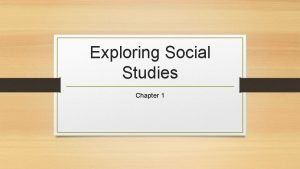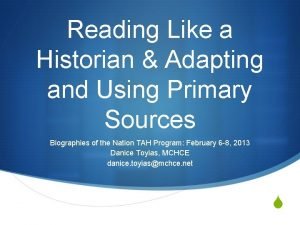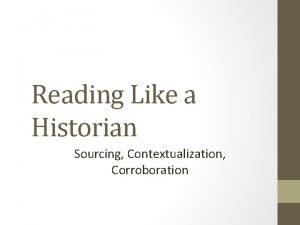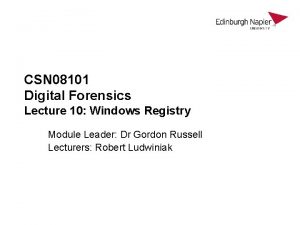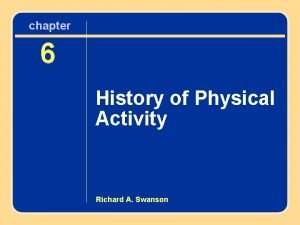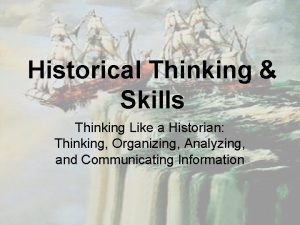Thinking Like a Historian Thinking Like a Historian










- Slides: 10

Thinking Like a Historian

Thinking Like a Historian Make observations from Page 119 in History Alive!

When? • Chronological Order - Dates in order of when the event happened • Timelines – A diagram that shows the order of events within a period of time • Sections evenly spaced • Labels events

Blocks of Time • Periods – a portion of time • Eras – period of time marked by certain characteristic • Decades – 10 years • Century – 100 years

Timelines • We use dates • B. C. = before Christ • A. D. = anno Domini • In Latin – means “the year of the Lord” • To date events that happened BEFORE the birth of Christ (or B. C. ), historians count backward from A. D. 1 (there is no year 0) • To date events after the birth of Christ (or A. D. ), historians count forward, starting at 1 A. D. • B. C. E. and C. E. – Common Era

Timelines • Turn to page 533 in Ancient Civilizations

Timelines • Brainstorm your personal timeline!

Primary Sources What is a PRIMARY SOURCE? • A primary source is direct evidence of an event, idea, period or development. • It is an oral or written account from ACTUAL PARTICIPANTS or OBSERVERS of an event • THEY WERE THERE • Examples: • Official documents • Speeches and interviews • Diaries and letters • Autobiographies • Advertisements and posters • Physical objects (tools, dishes, art, photographs, statues, videos or pictures)

Secondary Sources What is a SECONDARY SOURCE? • A secondary source interprets and analyzes primary sources • The person writing/creating it WAS NOT THERE • They did not witness the event with their own eyes • Examples: • A journal/magazine articles that interpret previous findings • A history textbook

How Do I Tell the Difference? • Primary source: the person had to be there at the time the event happened • Secondary source: studies and interprets the primary source
 Exploring social studies lesson 1 thinking like a historian
Exploring social studies lesson 1 thinking like a historian Why is it important to think and read like a historian?
Why is it important to think and read like a historian? Reading like a historian answer key
Reading like a historian answer key Reading like a historian document a
Reading like a historian document a Blue and gold basics ffa officers and meetings
Blue and gold basics ffa officers and meetings Mandiant web historian
Mandiant web historian Ffa chaplain opening ceremony
Ffa chaplain opening ceremony Ffa treasurer emblem
Ffa treasurer emblem Sapir whorf hypothesis
Sapir whorf hypothesis Between 1950 and 2000 physical activity professions
Between 1950 and 2000 physical activity professions Citect historian
Citect historian
